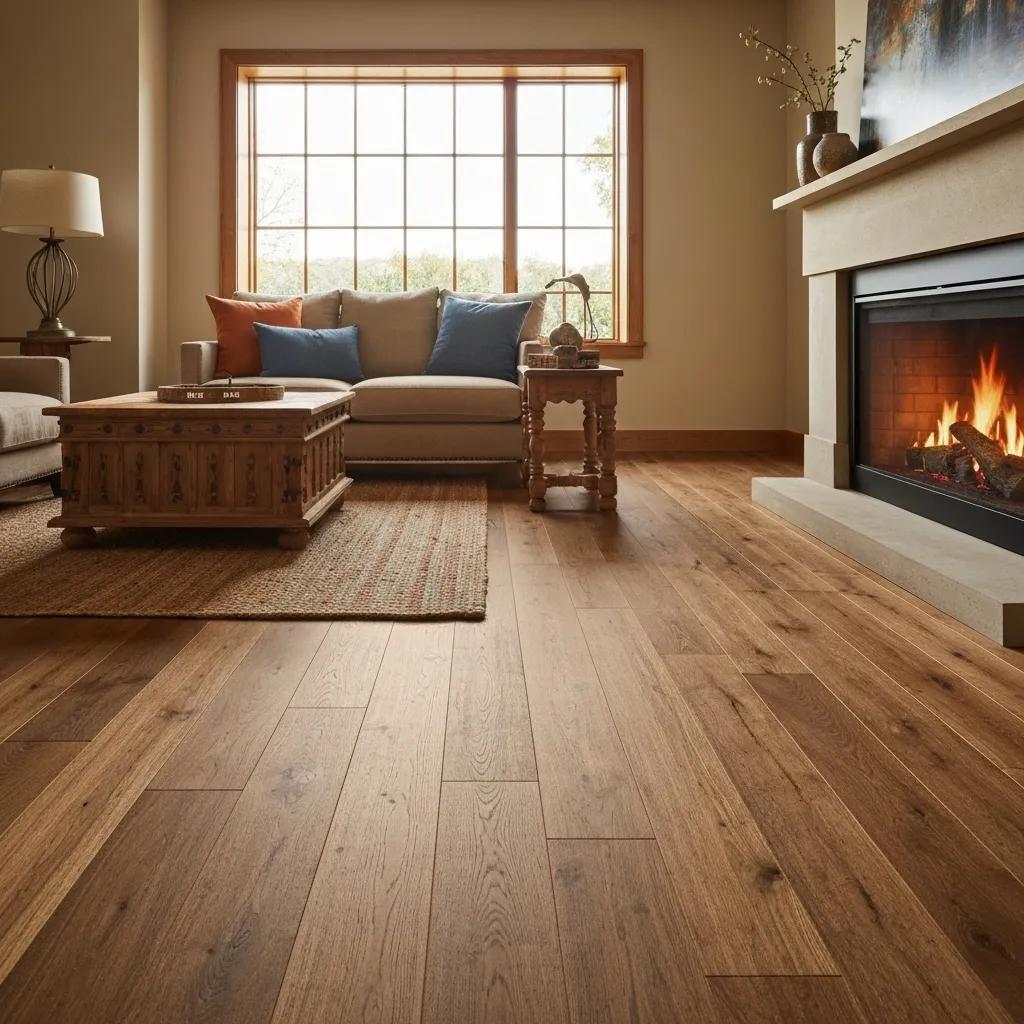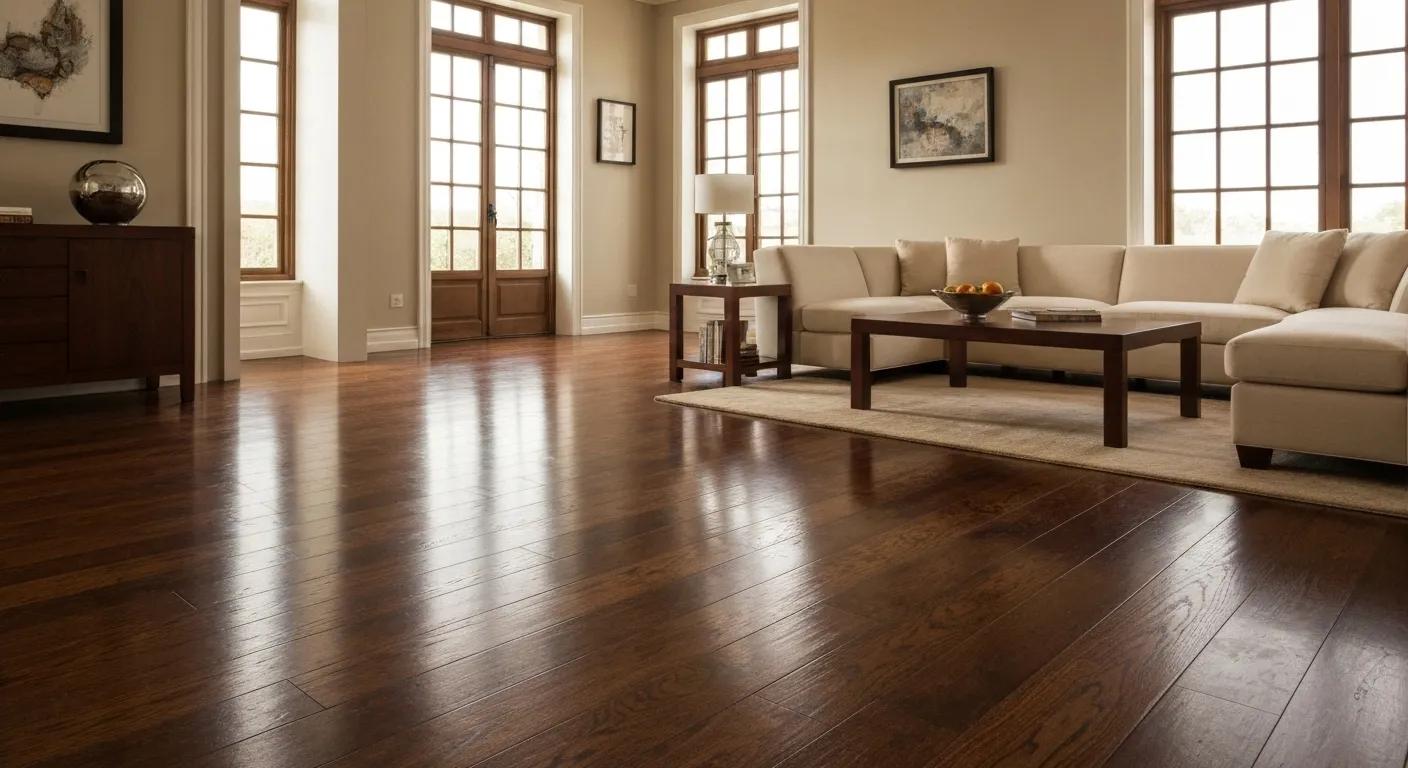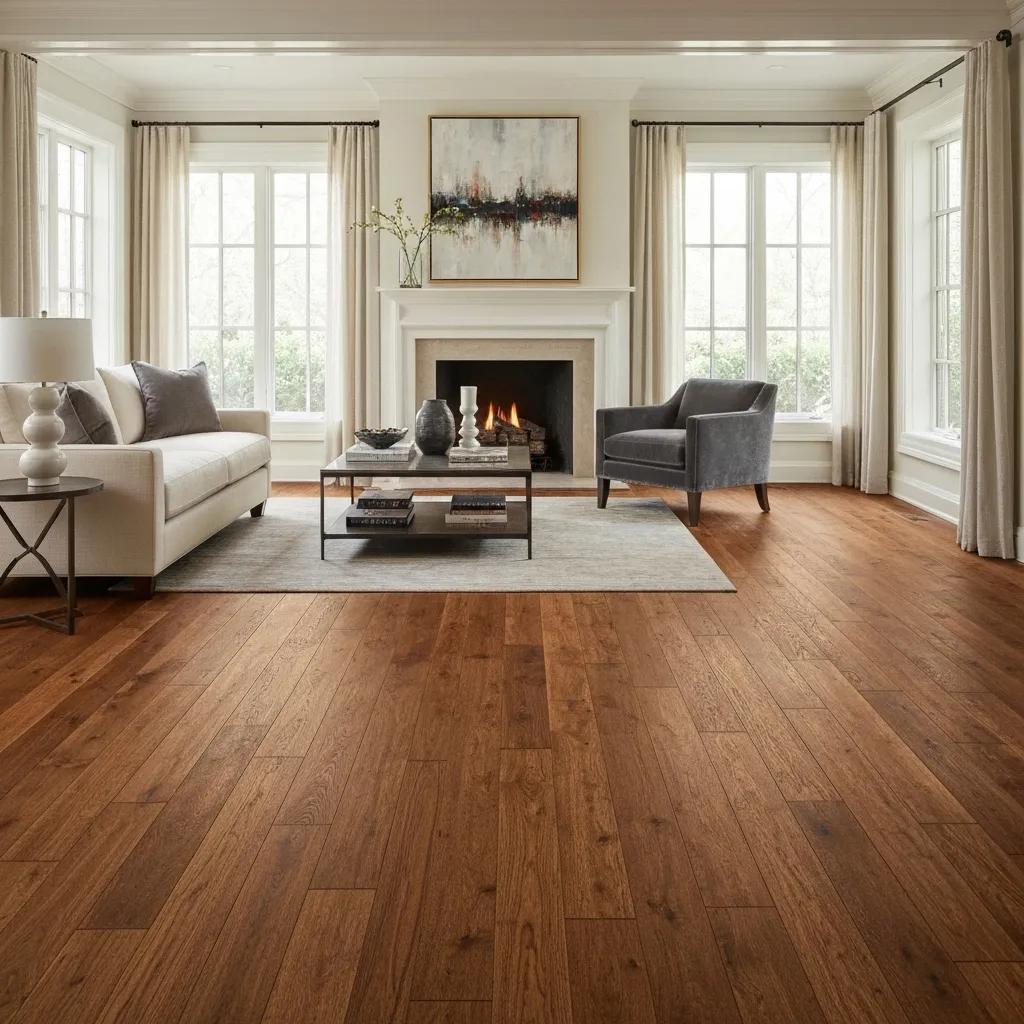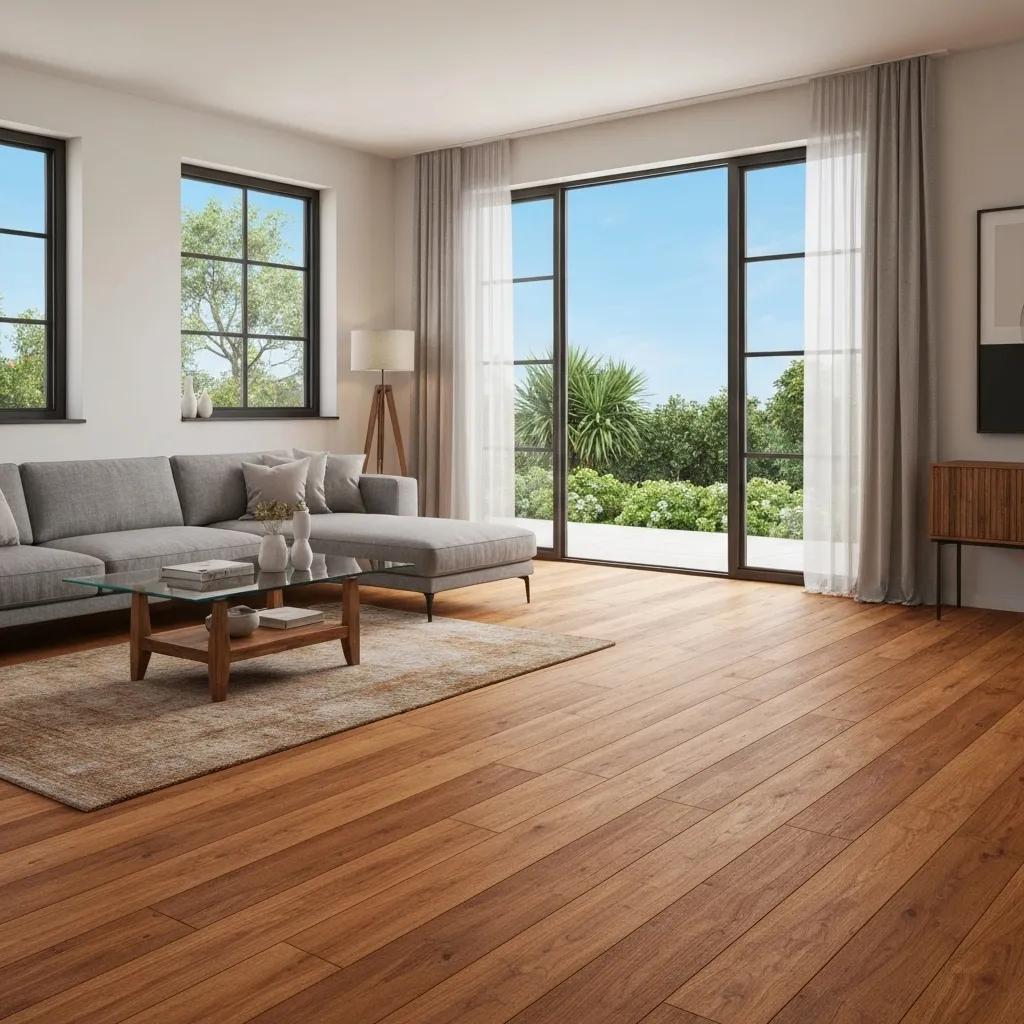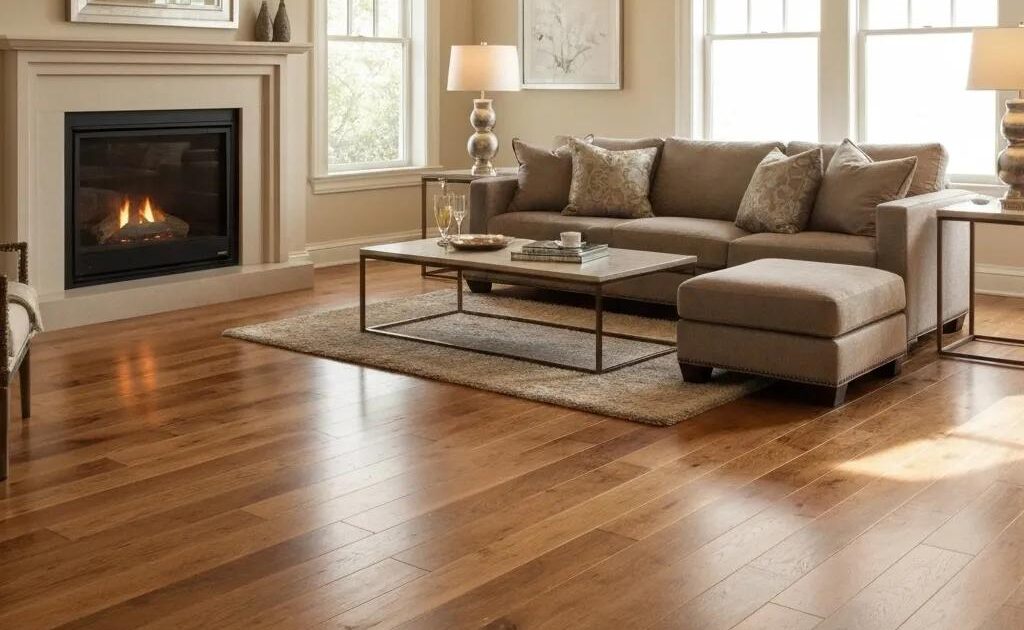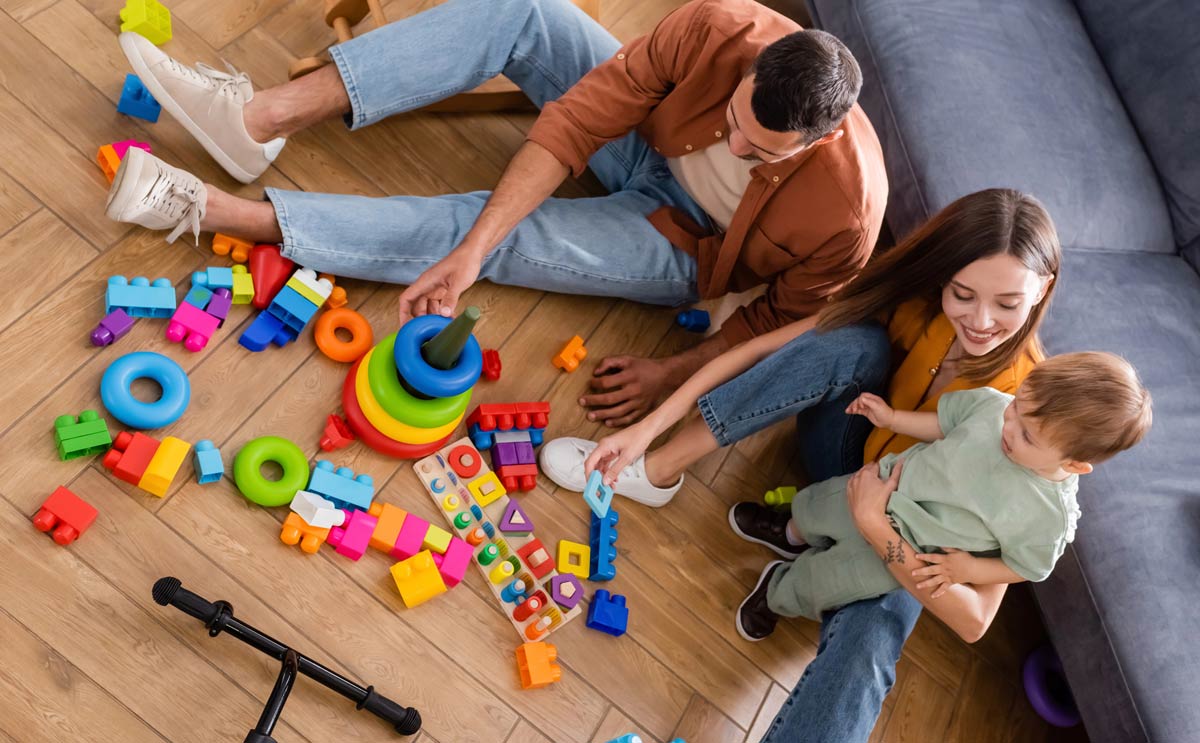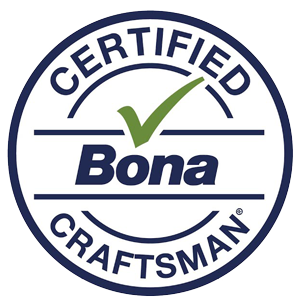The Ultimate Guide to Hardwood Flooring Types
Welcome to a comprehensive exploration of hardwood flooring types for homeowners and businesses in the Northwest Suburbs of Chicago. In today’s competitive home improvement market, choosing the right hardwood flooring is essential for combining aesthetics, durability, and functionality. Hardwood floors enhance any space with natural wood grain patterns and warmth while increasing property value. This guide reviews various hardwood types, wood species, finishes, installation methods, and care practices to help you make an informed decision.
Table of Contents
What Are the Different Types of Hardwood Flooring?
Hardwood flooring comes in several styles to suit different performance, design, and budget needs. The main types include:
- Solid Hardwood: Milled from a single piece of timber; can be refinished many times.
- Engineered Hardwood: Constructed with a top veneer over layers of wood, offering better moisture resistance.
- Parquet Flooring: Features geometric, mosaic-like patterns for visual interest.
- Reclaimed Hardwood: Uses repurposed wood with unique character and environmental benefits.
- Exotic Hardwood: Made from rare species with striking colors and intricate grain patterns.
Solid hardwood is ideal for traditional settings, while engineered options work better in areas with higher moisture, such as basements or kitchens. Understanding each type’s structure, installation needs, and cost helps match your design and environmental requirements.
What Is Solid Hardwood Flooring and Its Key Features?
Solid hardwood flooring is made from a single piece of wood, typically ¾-inch thick. Its natural grain variations add character, and it can be sanded and refinished multiple times to restore its luster. Installation is usually via nail-down or stapled methods, ensuring a secure, durable, and well-insulated floor. However, its susceptibility to moisture means proper climate control is critical, making it best suited for traditional, dry environments.
How Does Engineered Hardwood Flooring Differ From Solid Hardwood?
Engineered hardwood mimics the beauty of solid wood while addressing moisture and installation challenges. It features a thin layer of hardwood over several layers of fiberboard or plywood, which enhances dimensional stability. Ideal for basements, kitchens, and floors over radiant heating, it provides good moisture resistance. Although it may be refinished fewer times than solid wood, engineered hardwood balances natural aesthetics with improved performance in challenging areas.
What Is Parquet Flooring and When Is It Used?
Parquet flooring uses small wood pieces arranged in decorative geometric patterns, such as herringbone, basketweave, or chevron. This style is chosen for its artistic and formal appearance in dining rooms, entryways, and large open spaces. The precise installation needed for these patterns requires skilled craftsmanship, and while it can be more expensive, parquet offers a unique, elegant look with durability similar to solid hardwood.
What Are Reclaimed and Exotic Hardwood Flooring Options?
Reclaimed hardwood flooring repurposes wood from old structures or barns. Its weathered textures and natural patina offer a distinctive, sustainable look. Exotic hardwood flooring features rare species like teak, mahogany, or ipe, known for their rich hues, complex grain patterns, and high density. While reclaimed wood emphasizes environmental responsibility and history, exotic options deliver luxury and superior strength for high-end applications.
How Do Hardwood Flooring Types Compare in Durability and Cost?
Durability and cost are key factors in choosing hardwood flooring:
- Solid Hardwood: Very durable with excellent refinishing potential but has higher upfront costs.
- Engineered Hardwood: Offers moisture resistance and moderate cost, though with limited refinishing.
- Parquet: Combines durability with unique design; installation is labor intensive.
- Reclaimed Hardwood: Premium pricing due to uniqueness and sustainable sourcing.
- Exotic Hardwood: Often the most costly due to rarity and high performance.
A well-informed decision requires comparing the upfront cost against long-term value and maintenance needs.
Which Wood Species Are Best for Hardwood Flooring?
Choosing the right wood species affects appearance, hardness, and durability. Common species include oak, maple, cherry, walnut, and hickory. Each varies in hardness (measured by the Janka rating), color, and grain texture, making it important to select one that fits your design and functional needs.
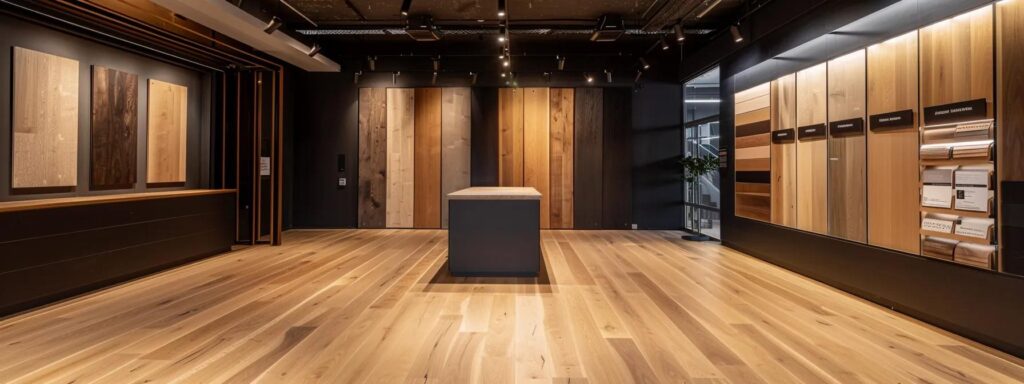
What Are the Characteristics of Oak Hardwood Flooring?
Oak is popular because of its distinct grain, durability, and moderate cost. It comes in red and white varieties, each offering subtle color differences. Oak withstands heavy foot traffic and can be refinished multiple times, making it a reliable choice for both residential and commercial settings. Its versatility in stain and finish allows it to complement many interior design themes.
How Does Maple Hardwood Flooring Perform in Different Settings?
Maple hardwood is valued for its fine, uniform grain and light color. It is one of the harder wood species, resistant to dents and scratches, and works well in modern, minimalist interiors. Although its denser structure can make staining challenging, its natural brightness contributes to a clean, neutral look ideal for high-traffic areas and family homes.
What Makes Cherry, Walnut, and Hickory Popular Choices?
- Cherry: Known for its rich, warm hues that deepen over time, delivering a luxurious patina.
- Walnut: Prized for its dark, sophisticated tone and intricate grain, ideal for upscale settings.
- Hickory: One of the hardest domestic woods, noted for its dramatic grain contrasts and superior durability in high-traffic areas.
Each species offers different visual and functional benefits based on usage and desired ambiance.
How Do Wood Species Affect Hardness, Color, and Grain Patterns?
The choice of wood species determines the floor’s resistance to wear, its color palette, and the textural detail provided by the grain. Harder species like hickory offer high durability, while species like cherry provide elegant, softer tones. The grain pattern—whether straight, wavy, or knotty—adds character and influences overall style and maintenance requirements.
Which Wood Species Are Best for High-Traffic Areas and Kitchens?
For high-traffic areas and kitchens, durability and low maintenance are crucial. Species such as oak, hickory, and certain maples are recommended due to their high hardness ratings and resistance to wear. Engineered hardwood that uses these species can also handle moisture fluctuations in kitchens and basements, making them ideal for busy environments.
What Are the Common Hardwood Flooring Finishes and Their Benefits?
Finishes not only enhance appearance but also protect against wear, moisture, and stains. The primary types are:
- Oil-Based Finishes: Provide a warm amber tone with a deep, penetrating protection; they require longer curing times and periodic maintenance.
- Water-Based Finishes: Dry quickly, maintain the wood’s natural color, and emit fewer VOCs, making them environmentally friendly.
- Pre-Finished vs. Unfinished Options: Pre-finished flooring arrives with a uniform factory-applied finish, reducing on-site labor, whereas unfinished wood allows for customizable stains and finishes after installation.
How Do Oil-Based Finishes Protect Hardwood Floors?
Oil-based finishes create a protective film that enhances the wood grain with a warm glow. Their deep penetration helps resist scratches, stains, and moisture, though they require longer curing times and periodic reapplication to maintain their protective qualities.
What Are the Advantages of Water-Based Finishes?
Water-based finishes offer a modern, clear finish that preserves the natural hues of the wood. They dry rapidly, lower the risk of VOC emissions, and facilitate easier cleaning. This finish is especially suitable for interiors where rapid project completion and minimal odor are priorities.
When Should You Choose Pre-Finished vs. Unfinished Hardwood?
Choose pre-finished hardwood when you want rapid installation and durability immediately after laying the floor. Unfinished hardwood, finished on site, allows for custom staining and finishing, which is ideal for those seeking a tailored look, although it requires more time and professional skill.
How Do Finishes Impact Floor Maintenance and Longevity?
A high-quality finish protects hardwood floors and minimizes the need for frequent refinishing. Oil-based options may require periodic touch-ups, whereas water-based finishes often yield lower maintenance routines. Smooth, sealed surfaces are easier to clean and resist dust and debris buildup, extending the floor’s life and appearance.
How Are Hardwood Floors Installed? Common Installation Methods Explained
The installation method affects the floor’s durability, appearance, and maintenance. Three common methods are:
• Nail-Down Installation: Traditional method used for solid hardwood, offering long-term durability by securely fastening each plank.
• Glue-Down Installation: Ideal for engineered hardwood and parquet floors, where an adhesive bonds the flooring directly to the subfloor, providing stability.
• Floating Installation: Utilizes interlocking planks over an underlayment, suitable for systems over concrete and where underfloor heating is present.
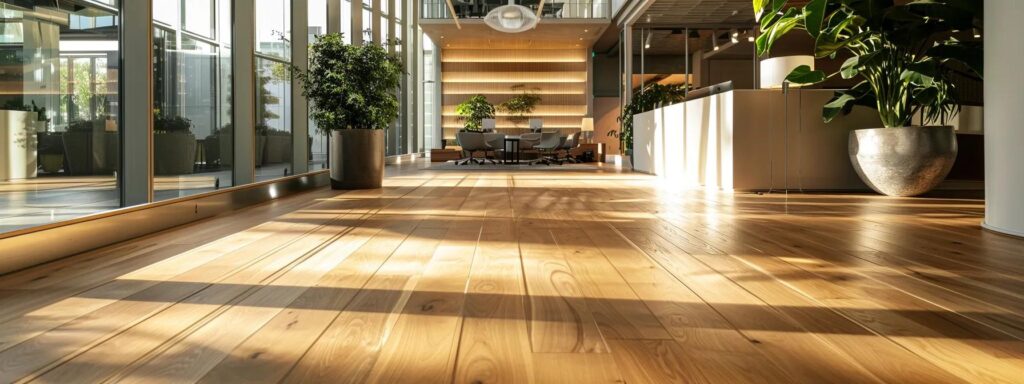
What Is Nail-Down Installation and When Is It Recommended?
Nail-down installation fastens hardwood directly to a wood subfloor using nails or staples. It allows for natural wood expansion and contraction and is ideal for traditional settings with stable subfloors. Its secure fit makes it highly durable, though it is labor-intensive.
How Does Glue-Down Installation Work for Hardwood Floors?
Glue-down installation uses strong adhesives to secure flooring to the subfloor, making it suitable especially for engineered hardwood and parquet. This method works well on concrete or uneven surfaces, offering a smooth finish and reducing movement between planks.
What Is Floating Installation and Its Pros and Cons?
Floating installation involves laying planks that interlock or adhere to an underlayment without being fixed to the subfloor. It is quicker and works on various subfloors, including concrete. However, while more cost-effective and accommodating for underfloor heating, it may offer slightly less long-term stability compared to nailed or glued methods.
How Do Installation Methods Affect Flooring Durability and Cost?
The chosen installation impacts both performance and expenses. Nail-down methods are exceptionally durable but more labor-intensive and costly. Glue-down methods offer strong adhesion on difficult surfaces, whereas floating floors provide a faster, cost-efficient solution with some trade-offs in stability. Homeowners should balance installation costs with the expected longevity and maintenance requirements.
What Tools and Materials Are Needed for Hardwood Floor Installation?
Essential tools include a flooring nailer or stapler (for nail-down), high-quality adhesive (for glue-down), and interlocking systems (for floating floors). Additional materials include underlayment, moisture barriers, leveling compounds, spacers, and cutting tools. Using professional-grade materials and tools ensures efficient installation and long-term performance.
How Do You Maintain and Care for Hardwood Flooring?
Proper maintenance preserves hardwood floors’ beauty and extends their lifespan. Regular cleaning, prompt repairs, and periodic refinishing prevent issues like scratches, water damage, and dullness.
What Are the Best Practices for Cleaning Hardwood Floors?
Daily cleaning with a microfiber mop or vacuum is recommended to remove dust and dirt. For deeper cleaning, a lightly damp mop with a pH-neutral cleaner is ideal. Avoid excessive water to prevent damage and warping. Consistent cleaning helps preserve the finish and maintain the floor’s natural beauty.
How Can You Repair Scratches and Damage on Hardwood Floors?
Minor scratches and dents can be addressed with repair kits that include stain markers or wax fillers. For deeper damage, localized sanding and refinishing are necessary. Prompt repairs prevent further deterioration and keep the floor looking its best.
Which Maintenance Products Are Recommended for Different Finishes?
For oil-based floors, use penetrating, rejuvenating products that maintain the warm hue. Water-based finishes benefit from non-abrasive, pH-neutral cleaners. Additionally, felt pads under furniture and area rugs in busy areas help minimize wear.
How Often Should Hardwood Floors Be Refinished or Sealed?
High-traffic areas may require refinishing every 7 to 10 years, while less-used spaces can go longer. Regular resealing or a refresh coat annually or biennially helps protect the floor from moisture and stains, extending its appearance and durability.
What Are Tips to Extend the Lifespan of Hardwood Flooring?
Use area rugs, furniture pads, and gentle cleaning methods to prevent scratches and damage. Controlling indoor humidity and temperature fluctuations minimizes wood expansion and contraction. Routine maintenance and prompt repairs keep the flooring looking new and functioning well for many years.
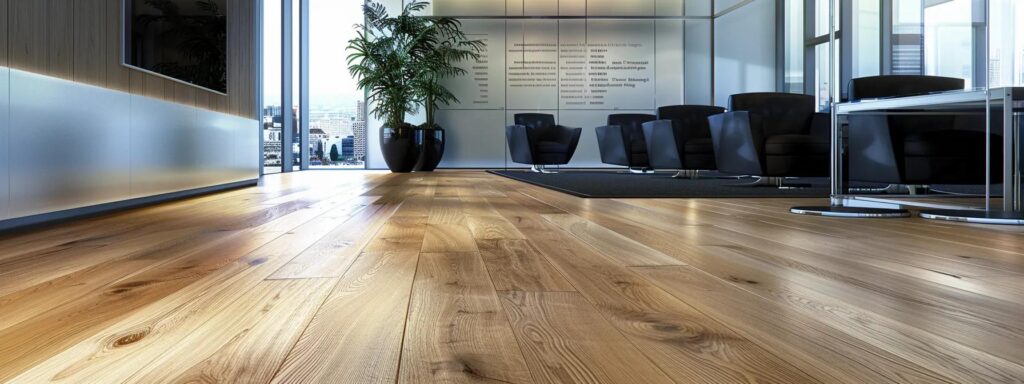
What Are the Latest Trends and Sustainable Options in Hardwood Flooring?
Modern trends favor engineered products, eco-friendly materials, and innovative designs. There is growing demand for flooring that combines natural beauty with superior performance and sustainability.
Why Is Engineered Hardwood Growing in Popularity?
Engineered hardwood’s multi-layer construction offers excellent stability, making it ideal for basements, kitchens, and installations with underfloor heating. Its versatility in installation methods (nail-down, glue-down, floating) and efficient use of wood resources make it both eco-friendly and cost-effective.
What Are the Benefits of Sustainable and Eco-Friendly Hardwood Flooring?
Sustainable flooring uses responsibly sourced or reclaimed wood that reduces deforestation and waste. Certifications like FSC and LEED ensure proper environmental and labor practices. Eco-friendly finishes with low VOCs improve indoor air quality, appealing to health-conscious homeowners.
How Do Certifications Like FSC and LEED Affect Hardwood Flooring Choices?
Certifications such as FSC and LEED guarantee that the wood is sourced responsibly and meets rigorous environmental standards. These certifications add value by appealing to eco-aware buyers and aligning with green building practices.
What Are Popular Hardwood Flooring Styles for Modern and Rustic Interiors?
Modern interiors often opt for engineered hardwood with light, natural hues and minimalistic designs, while rustic settings favor reclaimed or exotic hardwoods with rich textures and warm tones. Mixed patterns like parquet can be used in both styles to add visual interest.
How Can You Incorporate Hardwood Flooring Trends Into Your Home Design?
Incorporate modern trends by choosing flooring that complements your décor. Engineered hardwood works well in moisture-prone areas, while reclaimed wood adds a rustic charm. Creative installation patterns such as herringbone or chevron, paired with natural fiber rugs or minimalist furniture, can further enhance your interior design.
Final Thoughts
Hardwood flooring remains a timeless choice that combines natural beauty, durability, and long-term value. Whether you choose solid, engineered, parquet, reclaimed, or exotic hardwood, your decision should balance cost, maintenance, and sustainability with your design goals. With proper installation and care, hardwood flooring transforms spaces into inviting, high-quality environments that stand the test of time.

